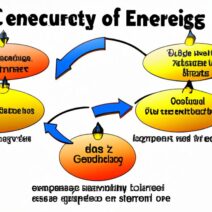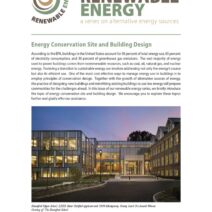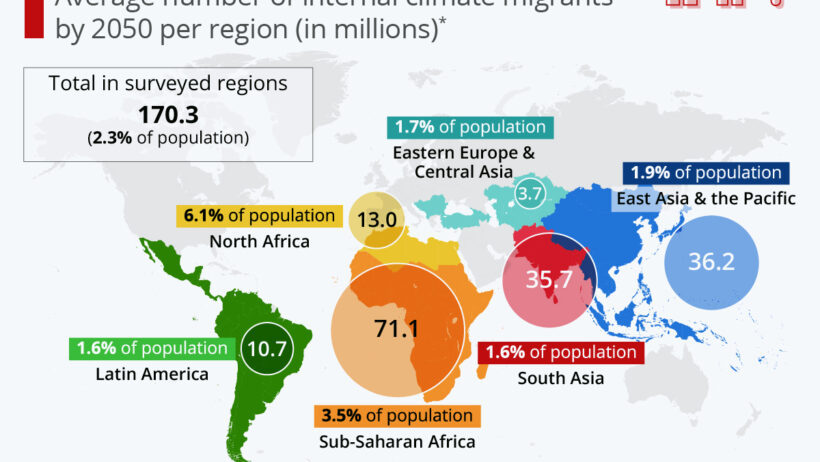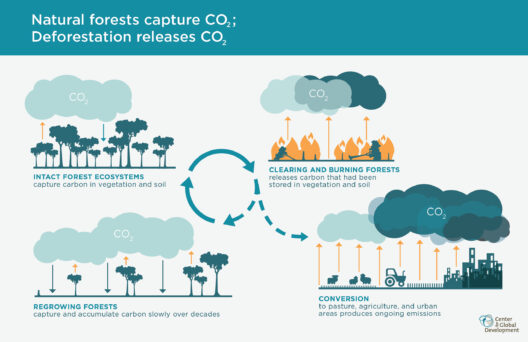The concept of climate migration—a term gaining traction in today’s discussions surrounding global warming—has become a pressing issue within urban development narratives. Imagine a bustling city teeming with life and opportunity, yet beneath the surface lies a question: What happens when this vibrant metropolis becomes a refuge for those fleeing environmental calamities? Urban areas are increasingly becoming the de facto sanctuaries for displaced populations seeking solace from climate-induced adversities.
As the planet warms, the adverse effects of climate change become all too evident. Rising sea levels threaten coastal communities, while wildfires and hurricanes wreak havoc on ecosystems and livelihoods alike. The United Nations has estimated that by 2050, over 200 million people could be displaced due to climate-related factors. This phenomenon compels us to explore the relationship between urbanization and climate migration, dissecting the implications for socio-economic dynamics and urban infrastructure.
Urban migration fueled by environmental degradation is not a novel occurrence. Historically, cities have served as magnets for those searching for solace, security, and opportunity amid turmoil. Leaping into today’s discourse, we must delve into the qualitative and quantitative aspects of this influx. Why are encroaching urban areas witnessing an exponential rise in their populations? The reasons extend beyond mere survival—they encompass socio-economic aspirations, access to resources, and the hope for better living conditions.
Cities, with their promises of employment, education, and healthcare, present an alluring landscape to the vulnerable. It’s crucial to understand the socio-political structures that govern these urban agglomerations. The availability of infrastructure, resources, and job prospects often outstrips what rural areas can provide. This disparity creates a significant gravitational pull towards urban centers, particularly for those whose livelihoods have been obliterated due to climate events.
However, integrating climate migrants into burgeoning urban settings is not devoid of challenges. Cities are often unprepared to accommodate the sudden influx of newcomers. Public services—housing, healthcare, transportation—face unbearable strains. The socio-economic fabric of these cities can fray, giving rise to tensions among long-standing residents and newcomers. Can urban ecosystems sustain such rapid growth without inciting discord?
Another worrisome reality is that urban environments, typically associated with higher living standards, are also increasingly bearing the brunt of climate impacts. The irony is palpable. Urban areas are often designed without comprehensive considerations for climate resilience. As these cities swell with populations escaping climate chaos, they too become susceptible to the very forces pushing people to migrate. The cycle seems unending, raising the urgent question of sustainability: Can a city be both a haven and a hotspot for climate-related risks?
Examining the current urban infrastructure reveals unforeseen vulnerabilities. Often, low-income communities bear the brunt of climate challenges. Housing in flood-prone areas often sees lower property values, yet these are precisely where many climate migrants find shelter due to economic constraints. This brings forth an ethical dilemma regarding urban planning and development. How can cities adapt without alienating those they seek to help?
Urban migration doesn’t merely alter demographics; it reshapes cultures and communities. As new residents integrate, there is an inevitable cross-pollination of ideas, traditions, and practices. However, this cultural amalgamation can also lead to tensions. The challenge lies in fostering inclusivity within cities while preserving the unique characteristics that define them. Can urban policies be crafted to celebrate this diversity rather than stifle it?
Besides cultural shifts, urban environments face heightened demands on their resources. Water scarcity, energy shortages, and waste management become pressing concerns. Urban planners and policymakers must labor to create a blueprint that not only accommodates growth but does so sustainably. Innovative solutions, such as green architecture and renewable energy sources, must be at the forefront of city planning. How do we ensure the resilience of urban infrastructure amidst an ever-growing population?
As the climate crisis escalates, implementing adaptive strategies will become increasingly critical. Cities worldwide face significant upheaval from escalating climate issues; however, they also possess the unique potential to innovate, adapt, and set precedents for resilience. Diverse solutions ranging from decentralized water management systems to public transportation initiatives can mitigate many risks. The interplay between modern urban challenges and climate migration necessitates a nuanced understanding of interconnected systems.
This ongoing issue invites us to reimagine the urban landscape of the future. What if cities could become models of sustainability that incorporate the voices of climate migrants, enriching the fabric of urban life while simultaneously addressing emerging climate crises? This is not merely a fantasy but a necessary paradigm shift. Urban centers must evolve, embracing inclusivity, adaptability, and resilience as foundational principles.
In conclusion, as we confront the multifaceted realities of climate migration, the urgency intensifies. Addressing the critical challenges posed by this phenomenon is an opportunity to reshape our urban environments for the better, fostering resilience while providing refuge. As sequestration and sustainability remain central to future discourse, the responsibility lies with governments, civil societies, and individuals alike. Can we rise to the grand challenge of redefining cities that serve as bastions of hope, equity, and sustainability in the face of an unpredictable climate future?




